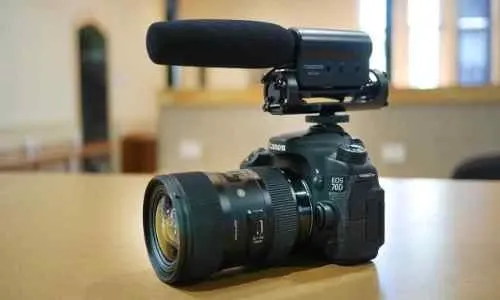



 Tech & IT
Tech & IT
 Business
Business
 Coding & Developer
Coding & Developer
 Finance & Accounting
Finance & Accounting
 Academics
Academics
 Office Applications
Office Applications
 Art & Design
Art & Design
 Marketing
Marketing
 Health & Wellness
Health & Wellness
 Sounds & Music
Sounds & Music
 Lifestyle
Lifestyle
 Photography
Photography
More Learnfly
Business Solution Become an Instructor"Food videography tantalizes the senses through the lens. From delectable close-ups to dynamic culinary storytelling, videographers craft immersive experiences that showcase the artistry of food preparation. Through meticulous framing, lighting, and editing, food videography transforms gastronomic moments into visually appetizing narratives, inviting viewers to savor the essence of each dish."












Learn more topics in various categories at one place. Explore unlimited courses in other categories and up-skill yourself today.

 Jazeb Akram
Jazeb Akram 4.2 771159 Beginner Level

 John Hedengren
John Hedengren 4.1 569062 All Level

 Ranjan Pandey
Ranjan Pandey 4.1 346728 All Level

 Muhammad Ahsan Pervaiz
Muhammad Ahsan Pervaiz 4.2 101337 All Level

 Pieter Vliegenthart
Pieter Vliegenthart 4.6 100916 All Level

 Jerome P.
Jerome P. 4.8 100881 All Level

 Senol Atac
Senol Atac 4.9 100091 All Level

 Vikas Munjal
Vikas Munjal 4.8 100064 Beginner Level

 Avinash A
Avinash A 4.8 100013 All Level

 HARSH VARDHAN Arts
HARSH VARDHAN Arts40 Lectures Beginner Level

 HARSH VARDHAN Arts
HARSH VARDHAN Arts31 Lectures Beginner Level

 Daniela Lambova
Daniela Lambova8 Lectures Beginner Level

 Daniela Lambova
Daniela Lambova11 Lectures Beginner Level

 Matthew Storer
Matthew Storer44 Lectures Beginner Level

 Matthew Storer
Matthew Storer60 Lectures Beginner Level
Food videography is a specialized form of videography focused on capturing and showcasing the preparation, presentation, and details of food in a visually appealing and enticing manner. It involves using videography techniques to highlight textures, colors, and the overall aesthetic of food, often with the goal of creating engaging and mouth-watering content.
Food videography is important for its ability to elevate the presentation of food, whether for culinary content creators, chefs, or food establishments. It provides a dynamic and immersive way to showcase recipes, cooking techniques, and the overall culinary experience. Engaging food videos can generate interest, inspire viewers, and contribute to the visual branding of food-related content.
Common components include careful planning of shots, attention to lighting and composition, close-up shots of food details, and capturing the cooking process. Food videographers often use techniques such as slow motion, focus pulls, and creative transitions to enhance the visual appeal of the video. Capturing the vibrant colors and textures of ingredients contributes to the overall visual impact.
Learning food videography involves understanding camera settings, composition techniques, and storytelling principles specific to food. Online tutorials, courses, and workshops focused on videography and food styling provide valuable insights. Practical experience, experimenting with different shooting styles, and studying successful food videographers contribute to skill development.
While specialized equipment can enhance the quality of food videography, it is not always necessary, especially for beginners. Many smartphones and entry-level cameras offer sufficient video recording capabilities. As individuals progress in their skills and projects, they may choose to invest in additional equipment such as stabilizers, external microphones, or higher-end cameras to improve the production quality of food videos. Understanding lighting and composition is crucial, regardless of the equipment used.





